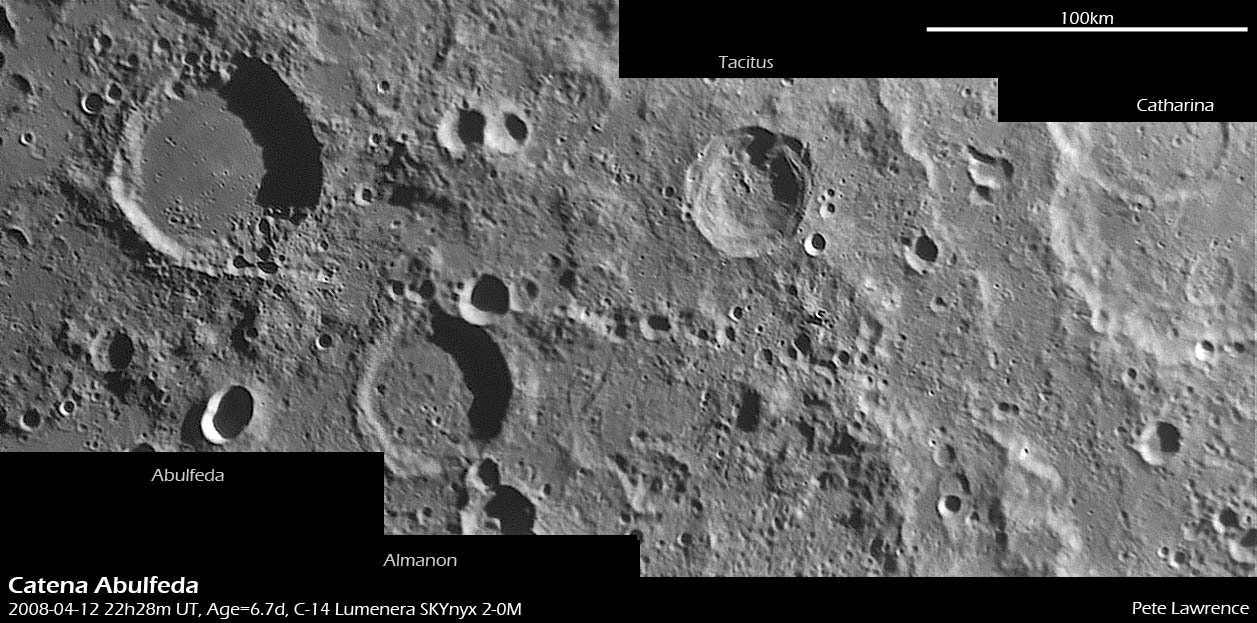October 30, 2017
Count the Pits
Originally published April 23, 2008

image by Pete Lawrence
Do you see a line of small craters? Enough people have that this 210 km long alignment has received the designation of Catena Abulfeda, named for the large flat-floored crater at upper left. Catena is the Latin word for "chain" and there is an impression of a chain, but with some broken or missing links. I don't know who first pointed out this feature but when it came to attention it was interpreted as a splendid example of a fault-controlled line of volcanic pits. And if these aligned pits were volcanic, why weren't all the other similar ones that occurred individually? Even scientists who accepted the evidence that most lunar craters formed by impact capitulated for a volcanic origin for these. But they were wrong. The solution didn't come easy. Lines of secondary craters became well known with the high resolution imagery from Lunar Orbiter and Apollo, but the Abulfeda Chain wasn't radial to any obvious large and young primary crater. Finally, in 1994 the breakup of Comet Shoemaker-Levy 9 and the rat-a-tat-tat machine gun-like cratering of Jupiter's atmosphere by its pieces exposed us to a previously unknown phenomenon. Soon, a model of sheared comets was developed to explain the long crater chains on Jupiter's moons Ganymede and Callisto. And then the model was applied to the Moon, with close passage of a hapless comet near the Earth shredding it into pieces that collided with the Moon. The prime example is the Davy Crater Chain, but this longer and narrower one is also a prime candidate.
Chuck Wood
Technical Details
On image
Related Links
Rükl plates 56 & 57
Pete's website
H.J. Melosh and E.A. Whitaker (1994) Crater Chains on the Moon: Records of Comets Split by the Earth's Tides? Lunar & Planetary Science Conference abstracts 25 p 893
R.W. Wichman and C.A. Wood (1995) The Davy Crater Chain: Implications for tidal disruption in the Earth-Moon system and elsewhere. Geophysical Research Letters 22, p. 583-586.
Yesterday's LPOD: Ignore the Domes
Tomorrow's LPOD: Mee Three
COMMENTS
1) I got a call from an old friend who says that we really don't know what formed this chain - the shredded comet idea is only a hypothesis, there is no evidence to prove it happened. He, even older than me (and wiser, he'd claim), clings to the idea that this is a volcanic pit chain. Again, there is no particular evidence that it is, but it is circumstantially unsupported by the observation that the only linear volcanic chains we recognize are like the Hyginus Rille - rimless collapse pits. The Abulfeda pits look like somewhat eroded, rimmed impact pits.
Chuck
COMMENTS?
Register, Log in, and join in the comments.



